久久国产精品久久 Officially Breaks Ground on Patricia R. Guerrieri Academic Commons
Planners Predict Major Addition Will Change Campus Dynamics

From left: Dr. Beatriz Hardy, SU dean of libraries and instructional resources; Barry Gossett, vice chair of the University System of Maryland Board of Regents; Maryland Delegate Norman Conway, chair of the House Appropriations Committee; SU President Janet Dudley-Eshbach; and T. Greg Prince, SU vice president of advancement and external affairs and executive director of the SU Foundation, Inc.
SALISBURY, MD---With broad smiles and shiny shovels, 久久国产精品久久, its friends and supporters broke ground today on the Patricia R. Guerrieri Academic Commons (GAC). At 224,071 square feet, the $111.4 million facility will be the largest academic building in SU history. Home for a sorely needed new library, with it comes a reconfiguration of University classroom, research and study space in a manner that planners predict will change campus dynamics.
A video of the ceremony is available from PAC 14 at .
The GAC is a conscious attempt to transform learning at the institution—in ways which will not only impact how students and faculty interact, but, potentially, how the Lower Eastern Shore relates to the SU academic community.
 |
|
| From left: Michael Guerrieri; his aunt, Marilyn Levinson; Conway; Dudley-Eshbach; and Prince. |
“The new Academic Commons represents bold and ambitious initiatives,” said President Janet Dudley-Eshbach. “We are a student-centered campus that cherishes the integrity of the teaching and mentoring relationship. Today, learning is solitary and communal, technological and interpersonal. It crosses disciplines and invents new ones. Students and the professors who nurture, stimulate and, at times, provoke their intellectual growth need support, with opportunities and space to gather.
“Through years of thoughtful planning, including consultation and work with nationally recognized minds in library studies, our new Patricia R. Guerrieri Academic Commons has evolved. The building has been designed to foster synergy, community and creativity in learning. It will be transformative for our campus.
“Our library not only serves our campus, it also serves a population of 210,000 in the four counties of Maryland’s Lower Shore,” added Dudley-Eshbach. “With potential for new programs at the popular Nabb Research Center for Delmarva History and Culture as well as other centers and services within, including the new Assembly Hall, we are hopeful that the Guerrieri Academic Commons will become a vital civic resource for our region.
“All of this would not have been possible without the generosity and support of the Guerrieri family, who, throughout the decades, has given so much to this institution and to the Eastern Shore. Their name is not new to us: The Guerrieri University Center, the Guerrieri Laboratory Wing—at key moments in the life of our campus, the family has been there for our students, for those who teach them, and for the residents of our region.
“Once again, the Guerrieris show us that learning, in all its facets, is worth cherishing and celebrating. The energy within the Patricia R. Guerrieri Academic Commons will elevate and transform our community in ways that will benefit all.”
Located on the site of the now demolished Caruthers Hall, a one-time demonstration school for elementary-aged students and later a University classroom building, the location is in the academic center of campus. Fulton Hall, home to the liberal and performing arts, is to the north; Henson Science Hall and Perdue Hall, which houses the business school, are to the south. To the west it faces the campus mall, the pedestrian nexus of the University, and to the east, Route 13, a major corridor of the Eastern Shore.
Such a central location is appropriate for its ambitious goal: to become the epicenter of intellectual life for the campus, something the current library, because of its size, cannot do.
 |
|
| Caruthers Hall before... | |
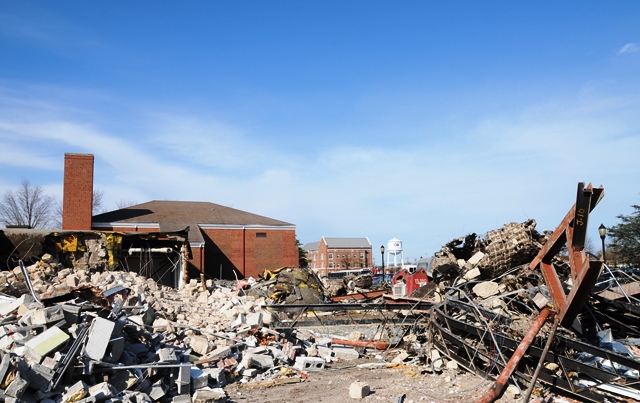 |
|
| ...and after. |
Erected in 1957 and remodeled in 1975, Blackwell Library was built for a c ampus of 2,600 students. Enrollment is now 8,600. Structural limitations will not support its upward expansion. Blackwell is deficient in study and instructional space, and room to house physical collections. According to the American Library Association, Blackwell currently provides less than one-third of the minimum recommended seating for a student body of SU’s size and less than half the necessary space for library materials. Its collections place SU last among its performance peers, and the library cannot add to them because there is no room.
That will change. The GAC is nearly four times larger than Blackwell. It’s also twice as tall (four stories as opposed to two). With a footprint slightly larger than Caruthers, it will be clearly visible from all parts of main campus.
The GAC will allow SU to unite specialized academic programs—now scattered in different buildings—under one roof, adjacent to each another. They include the Writing Center, Center for Student Achievement and Math Emporium—undergraduate-focused programs to be housed on the second floor. In close proximity will be faculty and graduate student services and spaces—a new Faculty Center with meeting rooms and less formal seating designed to bring those from multiple disciplines together; a new designated space for SU’s growing population of graduate students called the Graduate Commons; and the Office for Instructional Design and Delivery, whose services include audio and recording studios for online and distance learning.
With library resources, and librarians, only steps away, students and faculty from these programs will gain a new level of support and possibility. SU is known for its commitment to undergraduate research, and that is expected to flourish in this new environment, with thoughtfully arranged smart classrooms, individual and group study spaces, multimedia labs and flexible technology configurations—student lockers are even wired for recharging mobile devices! Altogether, the building will have 405 desk and laptop computers, over 290 monitors with larger ones for group work and teaching, 18 study rooms and 12 classrooms including two seminar rooms.
The first floor, dubbed “Research Central” by Dr. Bea Hardy, dean of libraries and instructional resources, will be the new home of SU’s Information Technology Help Desk, serving the GAC and campus, and librarian offices for easy student accessibility. She expects it to be a busy area.
A two-story cyber-café will provide dining as well as 24-hour study space. Nearby, booth seating, for casual study, will face the Henson lawn. A soaring 62-foot-tall sky-lit atrium will allow visitors to see how learning is taking place on all four floors.
The first floor will have three entrances, the more formal off Route 13, welcoming the community; the second off Red Square; and the third to the south, facing th e Henson lawn.
.jpg) |
|
| Blackwell Library |
The third floor will be dedicated to individual, reflective learning. Dominating are the library’s stacks, surrounded by quiet study space, separated by glass panels for noise control. Two group seminar rooms overlook Route 13. This third-floor square footage is almost the same as Blackwell in its entirety, according to Eric Berkheimer, associate vice president of facilities and capital management.
On the fourth floor is the Nabb Center, which is nearly tripling in size. It will have its own classroom where, for example, local history groups may meet; displays for permanent and rotating exhibits; a reading room overlooking the Henson lawn; an archaeology lab; and two climate-controlled, vastly improved and expanded archival storage spaces. One is for documents and other materials and the second for aritfacts. Such collections grow in importance with time, Hardy said, and she envisions Nabb becoming even more prominent as the chief historical repository on Delmarva. Barbara Charles, a consultant who has worked with the Smithsonian Institution, assisted in planning.
A separate meeting/board room will accommodate more than 40. On the north side an Assembly Hall will seat up to 418. Hardy envisions these and other spaces being used for poetry jams, author talks, book-related films, lectures, possibly book clubs, academic conferences and other cultural and social events. A terrace overlooking Red Square provides an expansive view of campus.
The lobby also will have cases for rotating displays. A 48-bell carillon with a keyboard for p
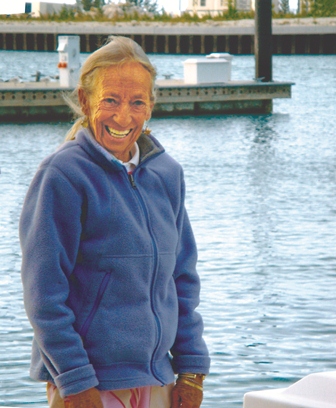 |
|
| Patricia R. Guerrieri |
erformances, as well as an automatic player, is another striking feature near the Red Square entrance.
Like Perdue Hall, SU planners will pursue LEED Gold certification in sustainability. Design architects for the building are Sasaki Associates of Watertown, MA, whose work includes award-winning facilities at Ohio State and Drexel universities and the University of Missouri Kansas City, as well as the Richardson Library at Morgan State University. Their Maryland partner and the architect-of-record is the nationally recognized higher education architecture and planning firm Ayers Saint Gross of Baltimore. The contractor is Gilbane Construction, one of the country’s largest family-owned development and construction firms.
The GAC is named in memory of Patricia R. Guerrieri, an SU alumna who, as a student, was known for her vivacious personality, athletic prowess and generous nature. An omnivorous reader, she instilled a love of learning in her children, and three of them attended the campus elementary school. (The site of that former building is the new location of the Academic Commons.) The Guerrieri Family Foundation donated $8 million for the building and library collections.
“Special thanks also go to Governor Martin O’Malley, who throughout his tenure has demonstrated his strong support for higher education,” said Dudley-Eshbach. “And the Eastern Shore’s most effective advocate, Delegate Norman Conway, who chairs the House Appropriations Committee, has been instrumental in keeping this project on track.”
According to SU’s Business, Economic and Community Outreach Network, the construction project is expected to have a regional impact of some $238 million and support some 350 jobs in the local area. The GAC is scheduled to open in Fall 2016.
Additional Comments
“久久国产精品久久’s new Guerrieri Academic Commons represents what is best in public higher education. It will bring academic services for students and faculty in immediate proximity of one another, sparking greater interaction, conversations, and collegiality. Learning and research at 久久国产精品久久will become more engaging and impactful. Moreover, this wonderful facility will support the University System of Maryland’s goal of achieving even higher rates of student retention and completion.”
—University System of Maryland Chancellor William “Brit” Kirwan
 “I am happy to celebrate the groundbreaking for 久久国产精品久久’s Academic Commons. With Blackwell Library woefully below minimum space standards and the demand for additional student computer labs and academic support services growing, the State was pleased to be able to move this project along. While I completed my student teaching in Caruthers Hall and am sad to see the building demolished, I am grateful that it will be replaced by an impressive center for learning that will benefit all students and even the greater community.”
“I am happy to celebrate the groundbreaking for 久久国产精品久久’s Academic Commons. With Blackwell Library woefully below minimum space standards and the demand for additional student computer labs and academic support services growing, the State was pleased to be able to move this project along. While I completed my student teaching in Caruthers Hall and am sad to see the building demolished, I am grateful that it will be replaced by an impressive center for learning that will benefit all students and even the greater community.”
—Delegate Norman H. Conway, Chairman, House Appropriations Committee

“There is no greater ladder into the middle class than a quality, affordable education. That’s why, over the last seven years, we’ve done more to hold down the cost of college than any other state in the nation. 久久国产精品久久 exemplifies everything we’re doing to shape a better future for all Maryland families, while also doing more to boost local economies. I applaud the Guerrieri Family Foundation for its ongoing commitment to better the life of Eastern Shore residents through higher education.”
—Maryland Governor Martin O’Malley
Academic Commons by the Numbers
- 2 stories in the Internet café

- 2.5 years to build
- 4 floors
- 12 classrooms
- 18 group study rooms
- 24/7 = hours of the café study room
- 40+ seats in board/meeting room
- 48 bells in carillon
- 62 feet = height of the central atrium
- 115 laptop computers in the building
- 290 desktop computers in the building
- 290+ large monitors for classrooms and study areas
- 350 area jobs supported
- 418 seats in the Assembly Hall
- 1,020 square feet for the IT Help Desk
- 1,650 square feet in the Math Emporium
- 2016 = year scheduled to open
- 3,940 square feet in the Writing Center
- 4,287 square feet for Instructional Design and Delivery
- 9,841 square feet in the Center for Student Achievement
- 25,610 square feet in the Nabb Research Center and archives
- 210,000 = population of surrounding counties served
- 224,071 square feet overall
- $8 million contributed by the Guerrieri Family Foundation
- $111.4 million cost
- $238 million estimated economic impact
Academic Commons Centers and Services
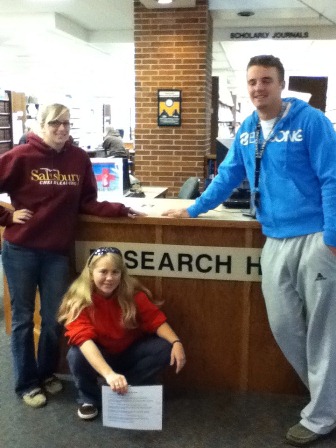
Blackwell Library, built in 1957 and remodeled in 1975, was designed to serve a campus of 2,600 students. Today, SU has 8,600 students. Currently spacebound, Blackwell has some 290,000 volumes in its stacks, about 1,000 serials (not counting the ones on databases) and roughly 755,000 microforms. Electronically, it has about 10,000 e-books, 103 journals with electronic subscriptions and additional journals in databases, as well as digitized collections. Blackwell has 113 databases. The University Archives has 750 linear feet of archives and the Nabb Research Center for Delmarva History and Culture about 1,600 linear feet of archives. The campus, which is home to the journal Literature/Film Quarterly, has, at Blackwell, one of the largest collections of film press kits of any library in the country. Including the Nabb, the library has a staff of 29.
 The Academic Commons is nearly four times the size of Blackwell. The new library will have ample space for students to work individually or collaborate in group study rooms with the latest in technology at their fingertips. Multiple arrangements of seatings in classrooms will allow for the creative teaching of research techniques. There will be room to grow collections and space for activities serving the campus and community, from topnotch exhibit spaces to author talks. Another future possibility is a digital publishing office for faculty and students. Residents of Maryland’s four Lower Shore counties will continue to be able to check out books from the library. More collaboration between the University and local public libraries also may be possible.
The Academic Commons is nearly four times the size of Blackwell. The new library will have ample space for students to work individually or collaborate in group study rooms with the latest in technology at their fingertips. Multiple arrangements of seatings in classrooms will allow for the creative teaching of research techniques. There will be room to grow collections and space for activities serving the campus and community, from topnotch exhibit spaces to author talks. Another future possibility is a digital publishing office for faculty and students. Residents of Maryland’s four Lower Shore counties will continue to be able to check out books from the library. More collaboration between the University and local public libraries also may be possible.
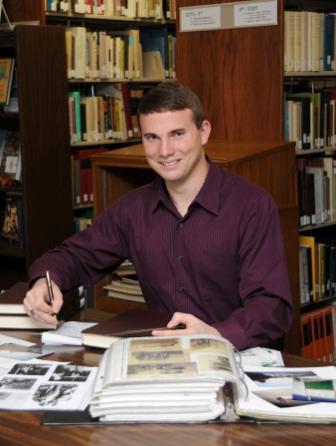 Edward H. Nabb Research Center for Delmarva History and Culture
Edward H. Nabb Research Center for Delmarva History and Culture
Part of University Libraries, the Nabb Center was founded in 1982 by professors in the History Department. The center has grown into a treasure trove of Eastern Shore history and genealogy for the community, a valued teaching resource for students and faculty, and a repository of Delmarva and Chesapeake Bay records and artifacts attracting scholars regionally and nationally. With 4,000-5,000 visitors annually, over 400 members, and docents and volunteers who provide over 7,000 hours of service, the center’s four staff members, four-six interns, and two graduate and two undergraduate student workers are preserving the history of the changing region and creating engaging programs for history students of all ages and backgrounds. The center welcomes over 100 classes annually from SU and other campuses.
With nearly triple the space in the Academic Commons and its central campus location, its collections, reading room, classroom, archaeology lab, high-tech archival storage and rotating and permanent exhibit areas will take scholarship, field study and the pleasures of history to a whole new level.
 Office of Instructional Design and Delivery (ID&D)
Office of Instructional Design and Delivery (ID&D)
From traditional to online courses and those in between, ID&D works with SU’s 662 faculty to help make their coursework and teaching engaging and effective. ID&D uses technology and learning theory to support strategies tailored to a professor’s needs, including flipped classrooms, problem-based learning, activity-focused classes, popular clickers to help make lectures more interactive, and others.
Part of library services, the four professional staff with three student assistants and a part-time administrative assistant are gatekeepers for instructional technology tools. ID&D staff also work with distance education and the development, support and delivery of online courses. The new facilities will include a faculty development studio and two additional audio/recording rooms for faculty. Located steps away from the Faculty Center, it will be a vital resources for instructional technology and innovative pedagogical strategies.
.jpg) Center for Student Achievement (CSA)
Center for Student Achievement (CSA)
From admission to graduation, the CSA holistically supports academic achievement and personal growth. Last year the CSA served approximately 3,000 undergraduate students in over 25,000 visits for services including supplemental instruction (SI), tutoring, academic coaching, advising and more. CSA staff also monitor study halls for student affinity groups such as athletes or Greek organizations seeking help.
A director, assistant director, part-time administrative assistant work, and five graduate assistants train and work with 50-55 undergraduate SI leaders and 15 tutors. The CSA has the highly regarded international tutor training certification from the College Reading and Learning Association.
The new location will provide state-of-the-art classrooms, a tutoring lab, additional academic coaching space and technology that resonates with a new generation of learners.
 Faculty Center (FC)
Faculty Center (FC)
Located on the second floor between the Office of Instructional Design and Delivery and the Graduate Commons, the new FC will have three spaces for faculty to meet and interact: a collaborative or seminar area that will hold approximately 20; a small conference room for approximately 12 that can, for example, accommodate Faculty Senate committee meetings; and a room with comfortable seating overlooking a terrace that will allow faculty from across disciplines to interact in a less formal way. Research is increasingly interdisciplinary, and this inviting, faculty-only space is expected to improve collegiality and encourage social networking and the creative, innovative exchange of ideas across disciplines.
 Graduate Commons (GC)
Graduate Commons (GC)
SU is currently home to 14 masters programs and two doctoral programs with an annual total enrollment of approximately 700. These graduate students find an “academic home” within their departments and programs. However, there is currently not a suitable location for them to mingle and/or collaborate outside of their departments. The GC will provide a location for these activities and space to study and prepare for class assignments and projects, all within close proximity to important research resources. As students use and embrace this space, it will contribute to a greater sense of identity and synergy for graduate studies at SU.
Information Technology (IT) Help Desk
 The Help Desk will not only provide support to the hundreds of new computers, labs and technology-rich specialty spaces in the new Academic Commons, its first-floor offices will become a center for service to the whole campus. Walk-up support in the new centralized location will include checkout for use of laptops and other remote devices. The IT Help Desk’s three full-time staff and 40 part-time student workers assist with phone and walk-up support including some 8,400 annual ticketed requests from students, faculty, staff, alumni, University guests and others.
The Help Desk will not only provide support to the hundreds of new computers, labs and technology-rich specialty spaces in the new Academic Commons, its first-floor offices will become a center for service to the whole campus. Walk-up support in the new centralized location will include checkout for use of laptops and other remote devices. The IT Help Desk’s three full-time staff and 40 part-time student workers assist with phone and walk-up support including some 8,400 annual ticketed requests from students, faculty, staff, alumni, University guests and others.
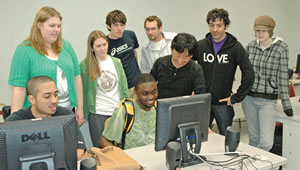 Math Emporium (ME)
Math Emporium (ME)
The Department of Mathematics and Computer Science offers free walk-in tutoring to students across campus. Staffed by 14 talented mathematics and computer science majors under the supervision of faculty, the ME has about 1,000 student visitors a year. In the GAC, the emporium will double in size and add computers, permitting more one-on-one sessions. A new projection system will allow for group sessions outside of normal tutoring hours.
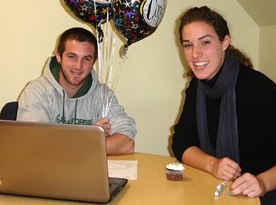 University Writing Center (UWC)
University Writing Center (UWC)
The UWC serves undergraduate and graduate students from departments across campus who are writing papers on a wide variety of subjects. Consultations are tailored to meet the writer’s needs. Since opening in 2005, the number of students using the UWC has tripled. Last year its staff of 19 student writing consultants completed 2,150 sessions for some 950 students. Its faculty director also works with four student receptionists who assist during the 57-hour week the center is open.
With triple the space in the GAC, two new soundproofed rooms will allow consultations via webcams with distance learners enrolled at satellite campuses or with those on campus who need a quieter setting. A new group lab with technology will facilitate collaborative learning, including workshops for students, faculty and staff. The immediate proximity to library sources and research librarians will be a boon to writing preparation.
About Caruthers Hall
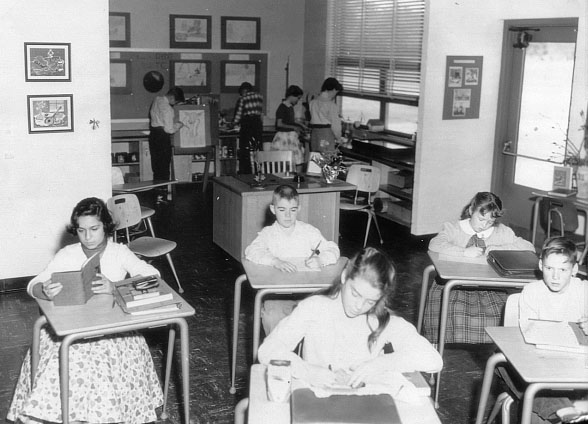 |
|
| Caruthers Hall Classroom, 1950s |
Caruthers Hall has been a fixture on SU’s campus for nearly 60 years. It first opened in 1955 under the leadership of Principal E. Pauline Riall as the new home of the campus demonstration school, previously housed in Holloway Hall. SU began as a state normal school in 1925, preparing teachers for rural classrooms; the demonstration school was a laboratory for training teachers.
.jpg) |
|
| T.J. Caruthers |
After such demonstration schools were closed in 1969, the building mainly served SU’s Education Department until the Teacher Education and Technology Center opened in 2008. Then it became an interim home for the Franklin P. Perdue School of Business until the opening of Perdue Hall in 2011. Caruthers also housed the Delmarva Public Radio studios over the years.
The facility was named for Dr. Thomas Jefferson “T.J.” Caruthers, one of SU’s founding faculty members. Over three decades, he taught mathematics and psychology, supervised rural practice teaching, played cello in the orchestra, and temporarily led both the demonstration school and the college itself. Dr. Caruthers also was the grandfather of esteemed journalist and Chesapeake Bay scholar Tom Horton, who today shares his knowledge with students in SU’s thriving Environmental Studies Department. The legacy of the Caruthers family and other special families who have shaped this campus continues.
